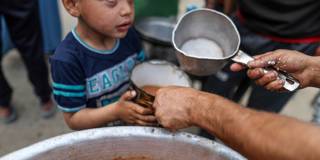Hunger is an immediate global crisis that demands massive investment. Fortunately, the potential rewards are enormous, because sustainable food systems not only reduce poverty and malnutrition, but also create jobs, promote economic growth, reduce gender inequality, improve health, and build stronger communities.
LUXEMBOURG/ROME – Although enough food is produced to feed the global population, hunger and malnutrition due to conflict, poverty, economic slowdowns, and climate change still threaten millions of lives. In 2023, around 2.3 billion people faced moderate or severe food insecurity and more than 730 million people suffered from hunger, with undernutrition linked to almost one-half of deaths of children under age five.

LUXEMBOURG/ROME – Although enough food is produced to feed the global population, hunger and malnutrition due to conflict, poverty, economic slowdowns, and climate change still threaten millions of lives. In 2023, around 2.3 billion people faced moderate or severe food insecurity and more than 730 million people suffered from hunger, with undernutrition linked to almost one-half of deaths of children under age five.